This is the 24th post in a series of tests of the Fujifilm GFX 100, Mark II. You can find all the posts in this series by going to the Categories pane in the right hand panel and clicking on “GFX 100 II”.
Those of you who have been following along with this series of posts about the GFX 100 II know that the camera drops to 12-bit from 14-bit or 16-bit precision when you set it to CH mode. I’ve been asked a quite reasonable question: does that mean that there is posterization at base ISO in CH mode? If there’s enough noise to properly dither the lower-precision analog to digital converter (ADC), there won’t be. If there isn’t, there might be.
Time for a visual test.
I pressed my always-handy, never-complaining bookcase into service, and made manual mode exposures at ISO 80 with the GF 110/2 at f/8 and 1/15 second, which is about 7 stops under the camera-metered exposure. I used single shot (SS) mode, which gave me the precision that I’d set in the camera’s menu system, which was 14 bits. Then I switched the drove mode to CH, and made another image. I brought the images into Lightroom and gave them some pretty heroic processing:
- Exposure +5EV
- Shadows +100
- Blacks +100
- Contrast +50
I white balanced to the top part of the spine of Ansel’s The Camera.
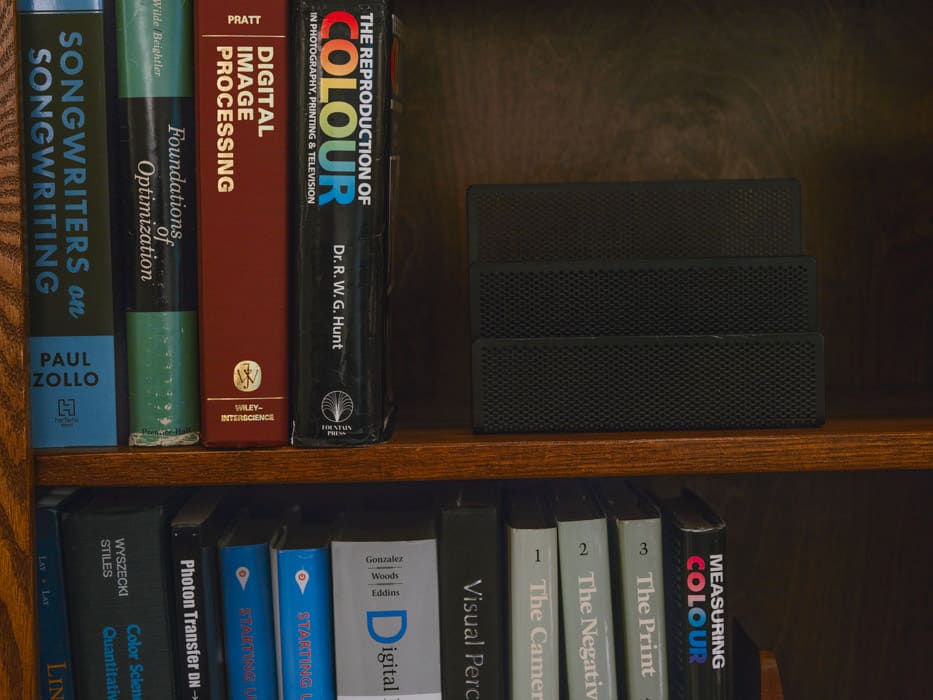
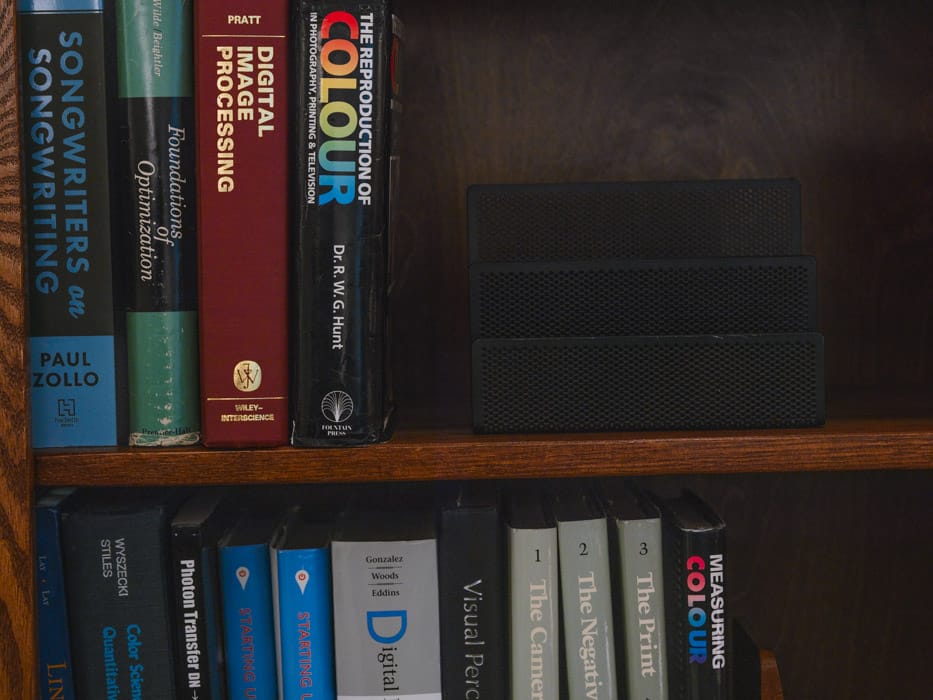
I realized I’d not looked at histograms in CH mode at ISO 80 before, so I used RawDigger to show histograms of the SS image below:
And also the CH image:
Well! It seems this camera has no end of tricks. It looks like the precision CH mode with ISO 80 is 13 bits. But maybe not. The lower part of the lowest pair of heavily-populated buckets is below the nominal black point, which is a little suspicious.
Looking at 1:1 crops of a dark portion of the two images:
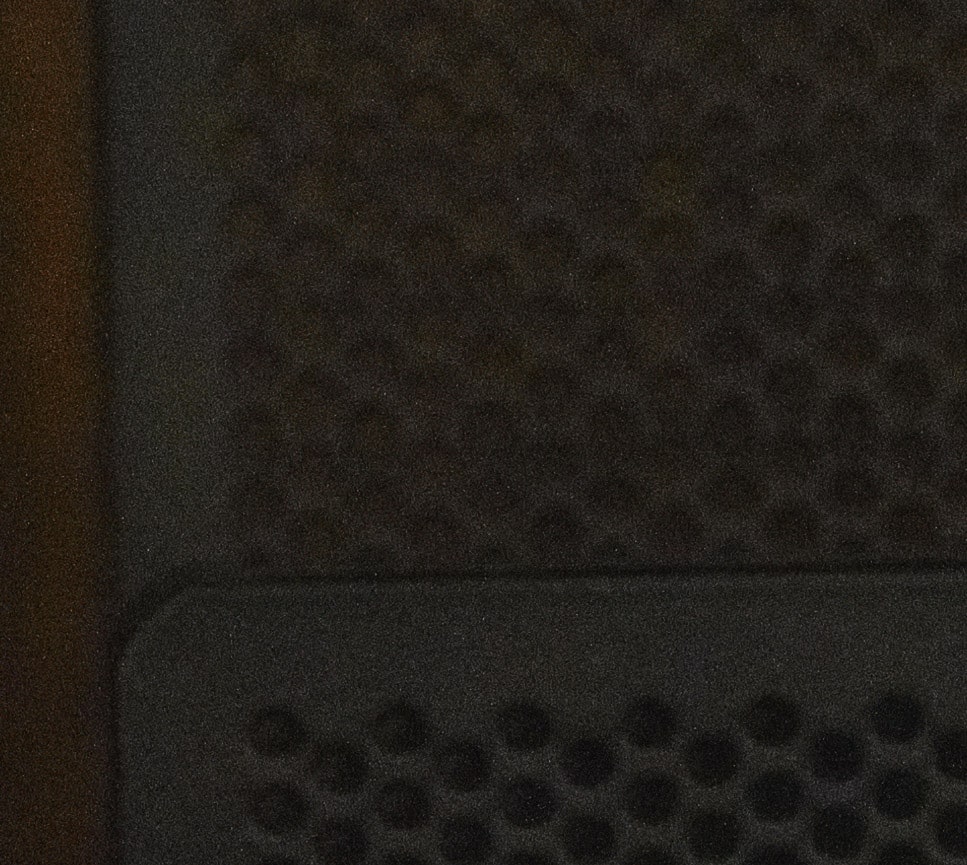
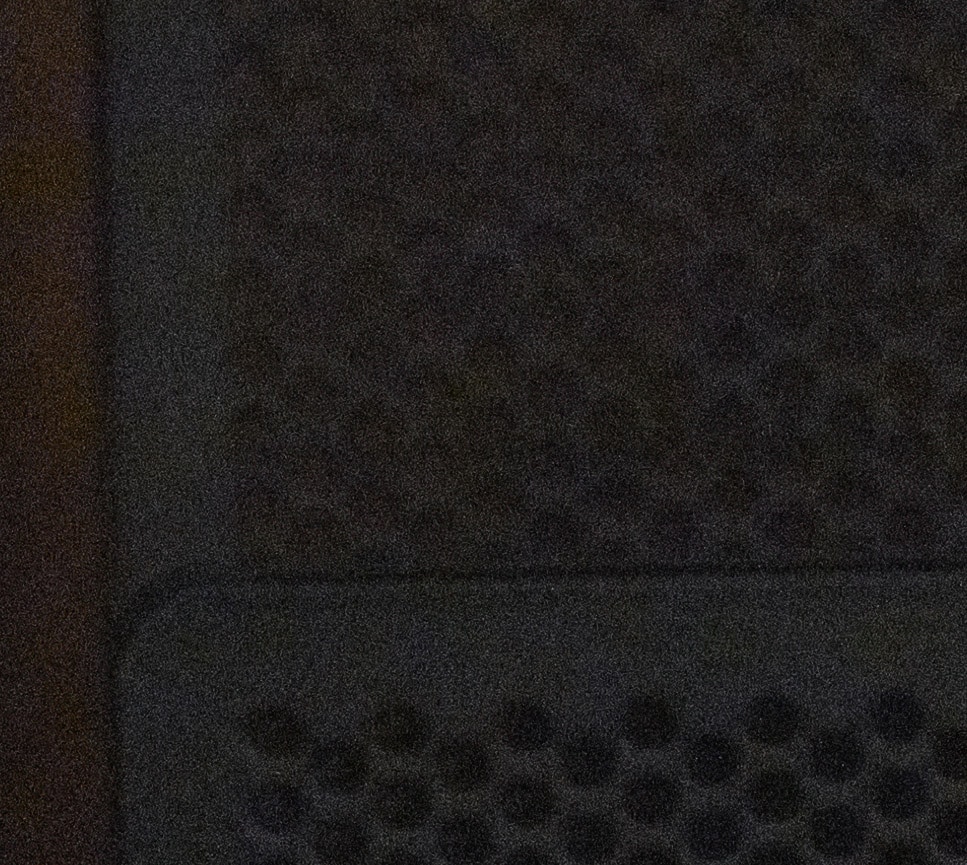
It’s clear there’s more noise in CH mode. But I don’t see any posterization.
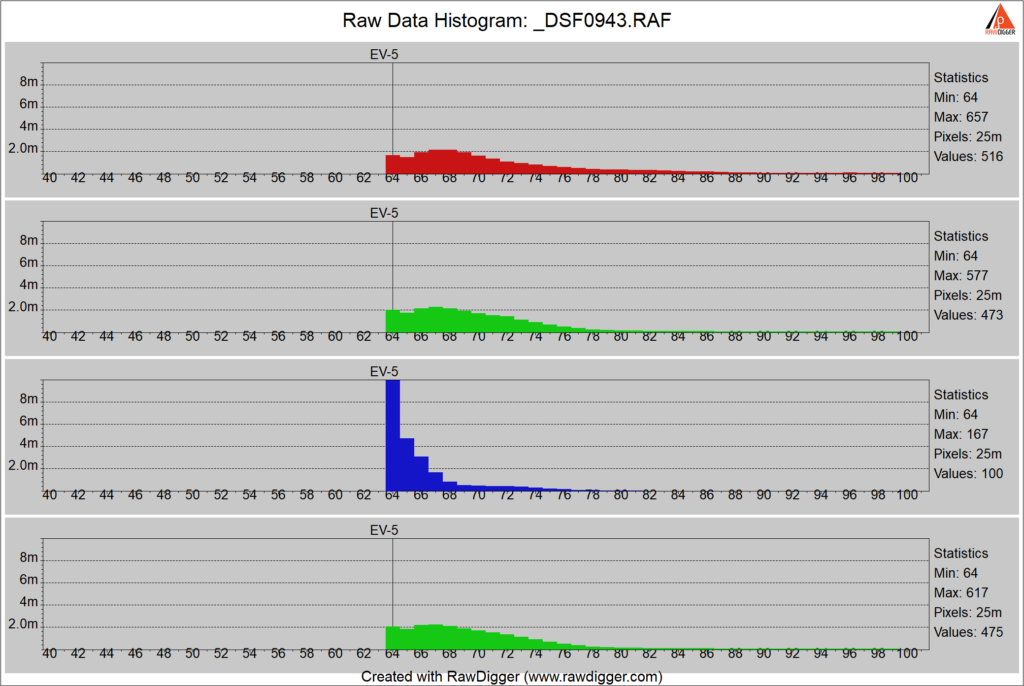
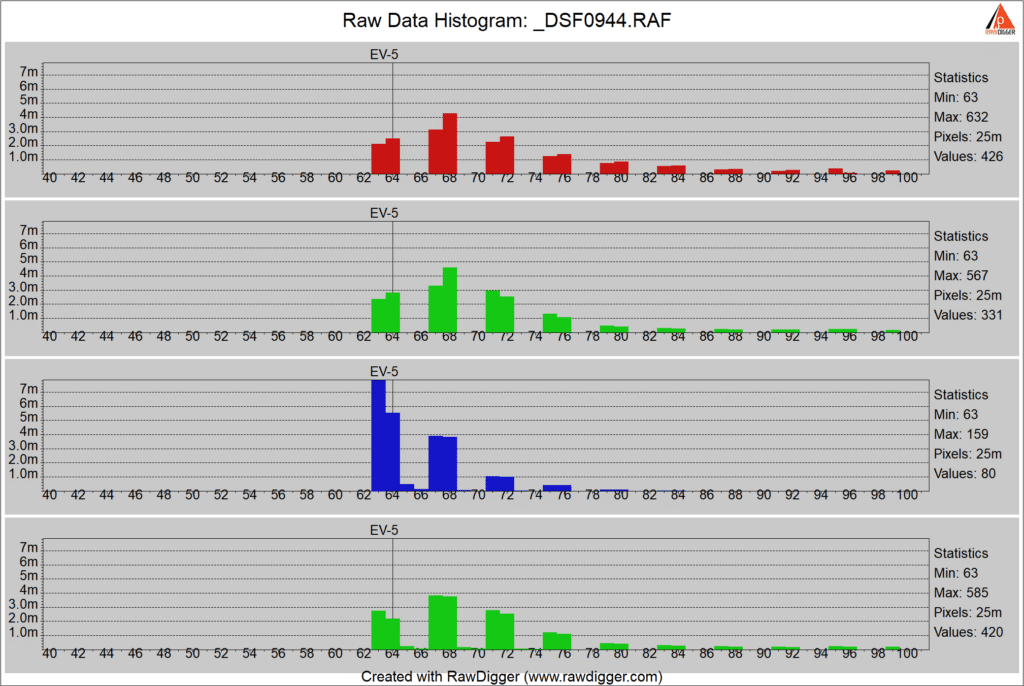
Emmmmmmmm says
Hi Jim.
I think the GFX100 II is still 12Bit AD at ISO80 with some processor FPN, focus pixel fix processing applied.
If it’s a 13bit AD in a 14Bit container package, it should have a code value distribution of 64-66-68-70-72-74-76, or 63-65-67-69-71-73-75.
And you measured 63-64-67-68-71-72-75-76, much like the 12Bit distribution of 63-67-71-75 with some kind of processing.
JimK says
That makes sense.
daniel says
These explorations are fascinating, but it all makes me wonder why Fuji doesn’t release proper documentation on their image processing and raw files.
Especially considering medium format is more like an imaging tool, rather than a practical camera for 99% of people.
JaapD says
Regarding the CH graph and it’s in between zero values: only from this graph one cannot conclude whether it is 12, 13, or 14 bit mode. We don’t know where the horizontal scale ends, where it’s saturation point is.
Example: picture yourself an image almost completely black, but in a corner a small white over-saturated section. Shoot it in CH mode. Do the black sections of the image result in Jim’s CH graph? Now where does the white over-saturation limits itself? Will it be at level 2^14 = 16384? Then we’re still in 14 bit mode. Or will it be at 2^12 = 4096? Then we’re in 12 bit mode.
Can you still follow me?
The fact that there are zero values in between only tells us that there is some matrix convolution going on, resulting in those zero values. It does not tell us if we’re in 12 or 14 bit mode. Look at the values that are not zero, they all represent full scale.
Cheers,
JaapD.
JimK says
In both cases, saturation is at the same raw count or DN.